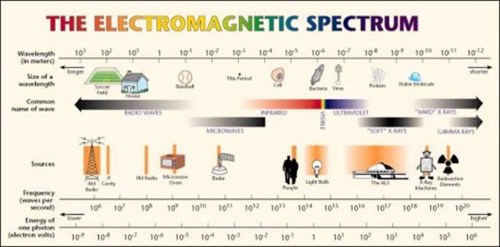Overview
‘Radiation’ refers to invisible emissions such as light and heat from the sun. Natural radiation such as this is essential for life.
- We encounter radiation and radioactivity every day. Most of this is from natural sources and is harmless.
- Radiation takes many forms and occurs naturally in the environment.
- It is also produced artificially e.g. in nuclear reactors to generate electricity.
Mankind generates other types of radiation every day:
- Microwaves for cooking
- Radio waves for communication
- Radar for navigation
- X-rays for medical examinations.
Also see information on Radon - GOV.UK (www.gov.uk)

Radiation Information and Guides
- Detailed information on Radiation: detailed information - GOV.UK (www.gov.uk)
- General information on radiation WIKI.
- Information on alpha, beta and gamma radiation.
- For general information on Medical radiation: uses, dose measurements and safety advice - GOV.UK (www.gov.uk)
- Guidance on Ionising radiation: damage and cancer - GOV.UK (www.gov.uk)
Businesses and organisations which wish to use or dispose of radioactive material must be licensed by the Environment Agency.
- Click here for the EA page on Radioactive waste disposal regulations and guidance.
RIMNet
The network, which was set up after the nuclear reactor disaster at Chernobyl in 1986, monitors radiation levels in the UK and alerts from other countries. It advises the government and local authorities on appropriate action following a 'radiation incident'.
Nottingham City Council is Nottinghamshire's lead authority for RIMNet. The authority can receive and respond to notification of incidents 24 hours a day, 365 days a year, and if necessary implement its emergency plan in conjunction with Nottinghamshire's other local authorities and the emergency services.
Each year the UK Government publishes a Radioactivity in Food and the Environment report for the previous calendar year, summarising results of a UK wide monitoring programme for radioactivity in food and environment. This monitoring has been conducted by the Environment Agency and the Food Standards Agency. The monitoring programme assesses the levels of radioactivity and the amount of radiation the public is exposed to near 39 nuclear sites in the UK.
The reports may be viewed on the Gov.uk website.
Non-Ionising - Electromagnetic Radiation emitted from mobile telephone base stations, radio transmitters, and microwave links.
The siting and location of these units are subject to the planning process. As a consultee in the planning process the Environmental Health & Safer Places Team, they refer to the appropriate standards and makes recommendations to the Planning Team on the siting of mobile phone base stations, transmitters and microwave links.
Electromagnetic Radiation from home and workplace wireless-based technologies (e.g. Bluetooth, Wi-Fi, cordless telephones)
European Directive 93/68/EEC (22 July 1993) stipulates that items of radio equipment with the CE mark will not produce radiation which would cause any danger.
The population is subjected to Radon more than any other radiation source in the UK
What Radon is
Radon is:
- A chemical element with symbol Rn and atomic number 86.
- It is a colourless, odourless, tasteless, naturally occurring, radioactive noble gas.
- It is one of the heaviest substances that remains a gas under normal conditions.
- It is considered to be a health hazard because it is radioactive.
- Radon is produced by radioactive decay of uranium that is present in rocks, soils, brick and concrete.
Uranium
Uranium has existed since the Earth was formed and has a very long half-life (4.5 billion years), which is the time required for one-half of uranium to break down. Uranium, radium, and thus radon and its decay products will continue to exist indefinitely at about the same levels as they do now. The most stable isotope of radon (222Rn) has a half-life of 3.8 days.
Guidance documents
- Read more on Ionizing radiation - Wikipedia
- Radiation: risks from low levels of ionising radiation - GOV.UK (www.gov.uk)
Further information on Radon can be found on the British geological survey website and on the Radon pages on GOV.UK.
The UKradon website has more information about Radon, including:
- Health risks
- Maps of radon-affected areas
- The radon measurement services that UKHSA offers
The UKHSA blog includes information on radon.